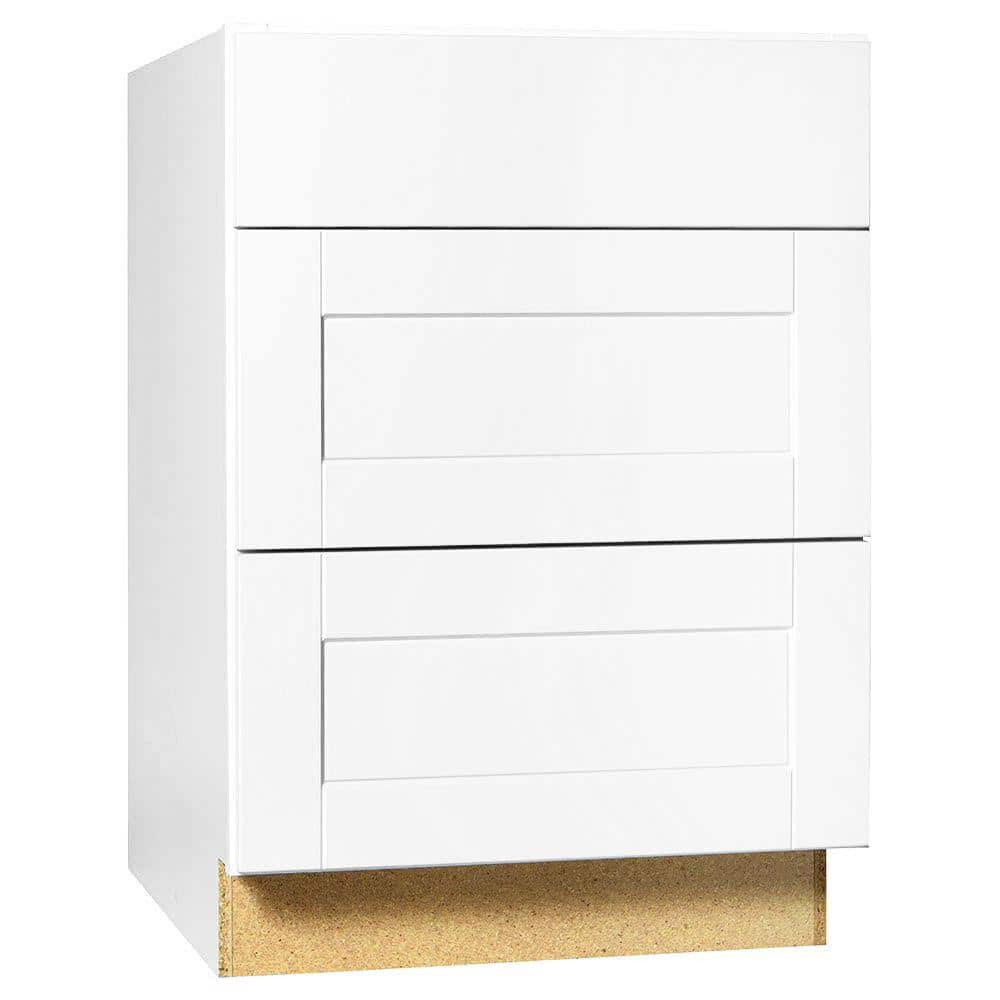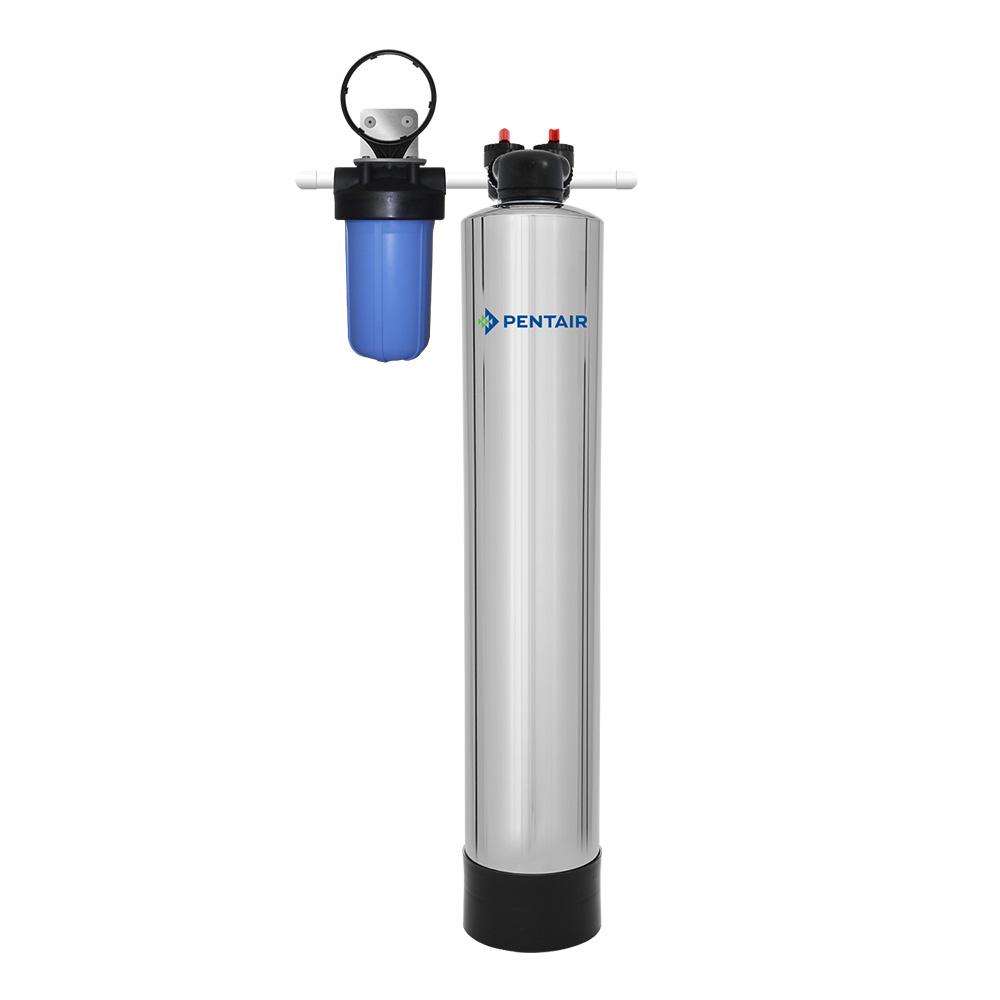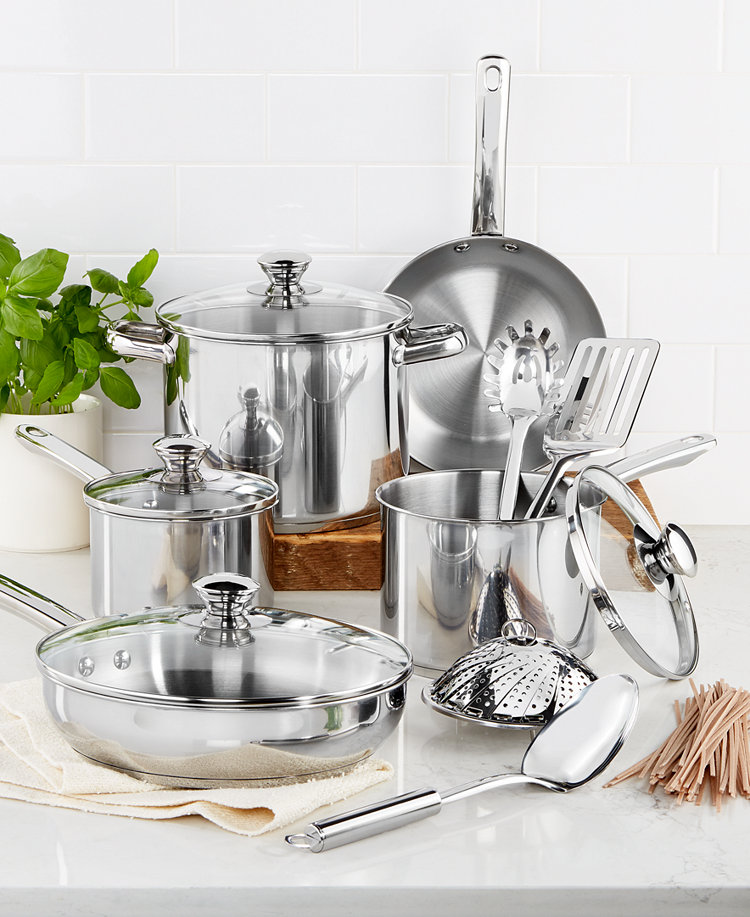Hampton Bay Shaker 24 in. W x 24 in. D x 34.5 in. H Assembled Drawer Base Kitchen Cabinet in White with Ball-Bearing Drawer Glides
Get started sooner with online orders shipping in 1 day. Features 3 drawers to suit all your storage needs. Shaker White kitchen cabinets add a modern look to any design.
The furniture-quality finish on the Hampton Bay Base Cabinet adds warmth and beauty to your kitchen design. The cabinet has three 4-sided hardwood drawer boxes that open easily on smooth ball-bearing glides, giving you easy access to a convenient storage space. The cabinet is preassembled for hassle-free installation.
- Framed construction with encapsulated panels offers a solid look
- Shaker door style provides a versatile look to your kitchen decor
- Ball-bearing drawer glides for smooth operation and durability
- Premium 4-sided hardwood drawer box
- Pocket screwed joints for solid durable cabinets
- Fully integrated panel joinery for strength
- Durable RTF finish
- Limited lifetime warranty
- Encapsulated panels, fully captured in grooves for strength
- Cabinets do not include hardware (decorative, installation, or countertop installation)
- Please follow your countertop manufacturer’s recommended methods for installing countertops
- Top drawer offers 4 in. H internal usable space
- Middle and lower drawers offer 8.25 in. H internal usable space
- Finished toe kick is not included; can be purchased separately under part number KATK-SW
Additional information
| Dimensions | H 34.5 in, W 24 in, D 24 in |
|---|---|
| Interior Cabinet Depth (in.) | 23.12 |
| Shelf Thickness (in.) | 0 |
| Manufacturer Warranty | Limited Lifetime Warranty |






by Paul
Good construction, nice color and easy to install. Like the drawers and look in a full kitchen.
by Diane
Very pleased with the cabinet. Well constructed and the drawers open and close with ease. Thank you.
by Gonzo
For the price and properly installed these Shaker cabinets in dove gray have really spruced up our laundry room.